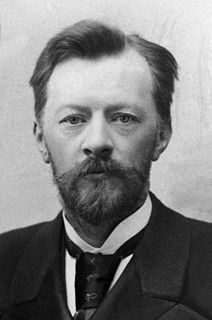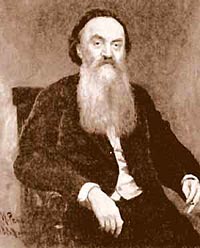 W
WIlya Prokofyevich Alekseyenko was a Ukrainian Red Army major general.
 W
WNikolai Nikolaievich Aseev was a Russian Futurist poet and writer.
 W
WMaria Gażycz, née Maria Nowina-Chrzanowska was a Belarusian-born Polish figure painter, art restorer, and nun in the order of the Sisters of the Holy Family of Nazareth.
 W
WAndrei Lavrentyevich Getman was a Soviet military commander, Army General and Hero of the Soviet Union.
 W
WMikhail Iosifovich Gurevich was a Soviet aircraft designer who co-founded the Mikoyan-Gurevich military aviation bureau along with Artem Mikoyan. The bureau is famous for its fighter aircraft, rapid interceptors and multi-role combat aircraft which were staples of the Soviet Air Forces throughout the Cold War. The bureau designed 170 projects of which 94 were made in series. In total, 45,000 MiG aircraft have been manufactured domestically, of which 11,000 aircraft were exported. The last plane which Gurevich personally worked on before his retirement was the MiG-25.
 W
WIlya Ivanovich Ivanov was a Russian and Soviet biologist who specialized in the field of artificial insemination and the interspecific hybridization of animals. He is famous for his controversial attempts to create a human-ape hybrid by inseminating three female chimpanzees with human sperm.
 W
WNikita Sergeyevich Khrushchev was a Soviet politician who led the Soviet Union during part of the Cold War as the first secretary of the Communist Party of the Soviet Union from 1953 to 1964 and as chairman of the Council of Ministers from 1958 to 1964. Khrushchev was responsible for the de-Stalinization of the Soviet Union, for backing the progress of the early Soviet space program, and for several relatively liberal reforms in areas of domestic policy. Khrushchev's party colleagues removed him from power in 1964, replacing him with Leonid Brezhnev as First Secretary and Alexei Kosygin as Premier.
 W
WMetropolitan Macarius, was the Metropolitan of Moscow and Kolomna in 1879–82 and member of many learned societies, including the Russian Academy of Sciences.
 W
WEvgeny Lvovich Markov was a Russian writer, critic and ethnographer.
 W
WJan Piekałkiewicz was a Polish economist and statistician, politician and the Polish Underground State's Government Delegate.
 W
WSemyon Vasilyevich Rudniev was one of the leaders of Soviet partisan movement during World War II and People's Commissar in the partisan group operating in Ukraine and led by Sydir Kovpak.
 W
WFyodor Andreyevich Sergeyev, better known as Comrade Artyom, was a Russian Bolshevik revolutionary, Soviet politician, agitator, and journalist. He was a close friend of Sergei Kirov and Joseph Stalin. Sergeyev was an ideologist of the Donetsk-Krivoy Rog Soviet Republic.
 W
WVladimir Grigoryevich Shukhov was a Russian engineer-polymath, scientist and architect renowned for his pioneering works on new methods of analysis for structural engineering that led to breakthroughs in industrial design of the world's first hyperboloid structures, diagrid shell structures, tensile structures, gridshell structures, oil reservoirs, pipelines, boilers, ships and barges. He is also the inventor of the first cracking method.
 W
WNadezhda Stepanovna Sokhanskaia was a Russian short story writer and autobiographer who wrote about the Ukraine, using the pen name Kokhanovskaya (Кохановская).
 W
WNikolay Nikolayevich Strakhov, also transliterated as Nikolai Strahov, was a Russian philosopher, publicist and literary critic. He shared the ideals of Pochvennichestvo and was a longtime friend and correspondent of Leo Tolstoy.
 W
WDmitri Semyonovich Sukhorukov was a Red Army General of the army who commanded the Soviet airborne between 1979 and 1987, during the Soviet–Afghan War. Sukhorukov fought as company commander in the 104th Guards Rifle Division during World War II and served in the 7th Guards Airborne Division postwar. In September 1962, he became the commander of the 98th Guards Airborne Division. He commanded the 2nd Army Corps from July 1968. After graduating from the Military Academy of the General Staff, Sukhorukov commanded the Central Group of Forces in November 1976. From January 1979 to July 1987, he was the commander of the Soviet airborne, overseeing its operations in Afghanistan. In July 1987, he became the deputy defence minister for personnel and in 1990 was in the Group of Inspectors General. After retiring in 1992, Sukhorokov died on 8 July 2003.
 W
WGeorgy Vasilyevich Sviridov was a Soviet and Russian neoromantic composer. He is most widely known for his choral music, strongly influenced by the traditional chant of the Russian Orthodox Church, as well as his orchestral works which often celebrate elements of Russian culture. Sviridov employed, in his choral music especially, rich and dense harmonic textures, embracing a romantic-era tonality; his works would come to incorporate not only sacred elements of Russian church music, including vocal work for the basso profundo, but also display the influence of Eastern European folk music, 19th-century European romantic composers, as well as neoromantic contemporaries outside of Russia. He wrote musical settings of Russian Romantic-era poetry by poets such as Lermontov, Tyutchev and Blok. Sviridov enjoyed critical acclaim for much of his career in the USSR.
 W
WViacheslav Petrovich Volgin was a Russian historian who wrote a number of books on early forms or precursors of communism, and who became vice-president of the Russian Academy of Sciences.